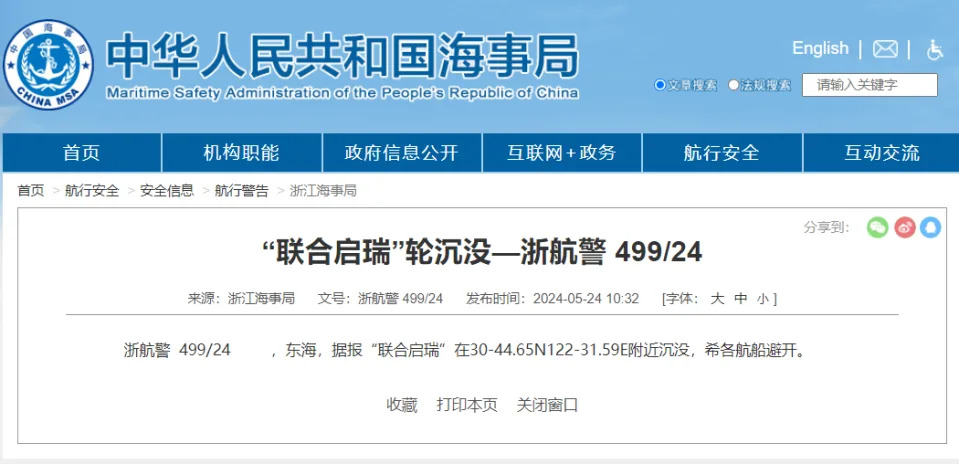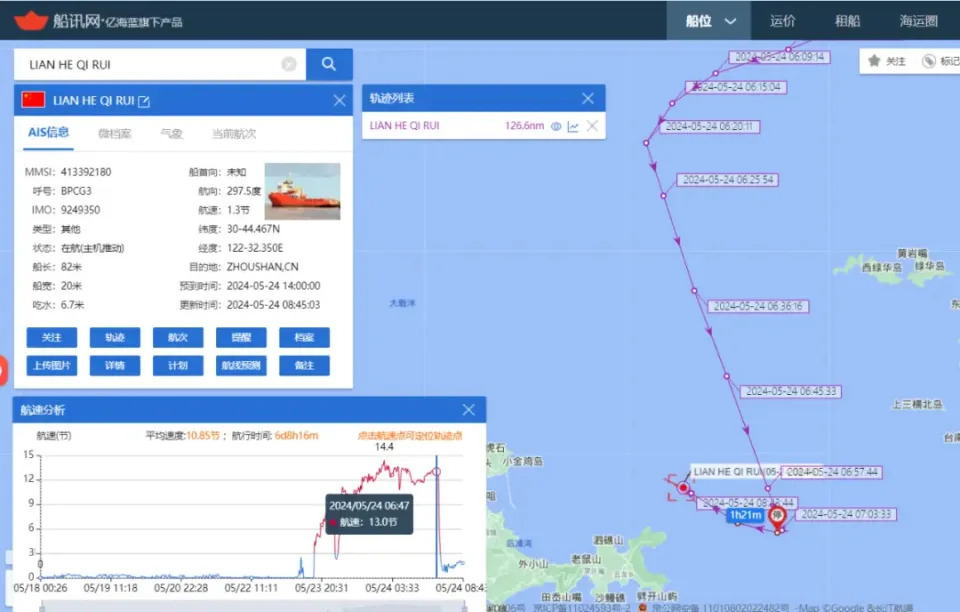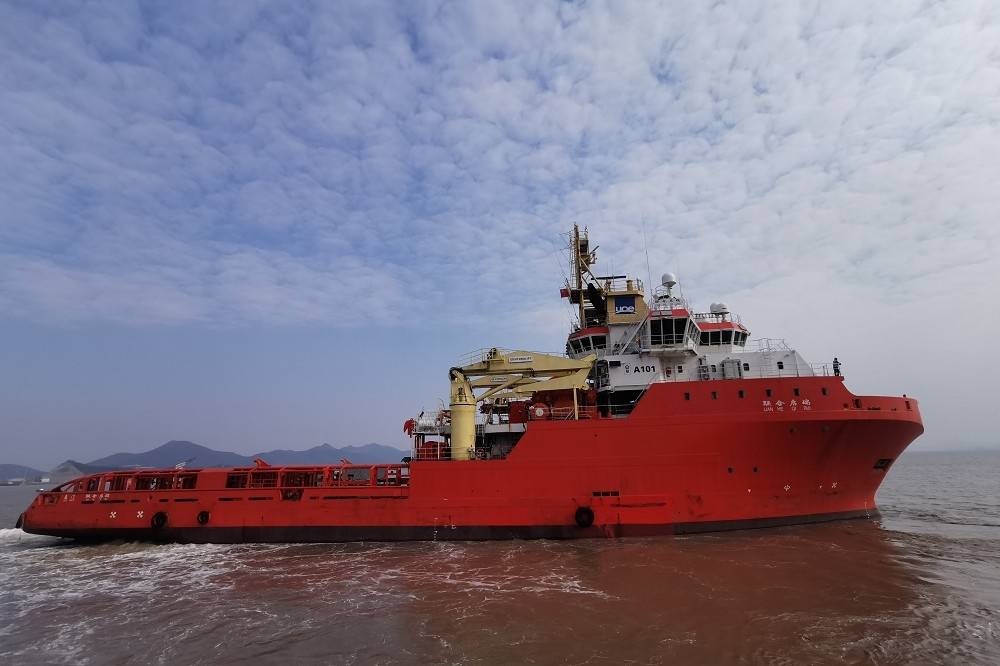A 4,000-ton Chinese ship, the “Lianhe Qirui,” has sunk in the East China Sea, announced the China Maritime Safety Administration (MSA) on May 24. The news came on the same day China concluded its two-day large-scale military exercise surrounding Taiwan.
According to the China MSA, the vessel sank near coordinates 30 degrees 44.65 minutes north latitude and 122 degrees 31.59 minutes east longitude, close to the northeastern part of Zhoushan, Zhejiang.
China’s “Xinde Maritime Network” reported that satellite AIS trajectory data showed the tugboat was originally headed for Zhoushan, Zhejiang. The ship was sailing south at about 13 knots before it turned abruptly at 7:02 am on May 24 and slowed down. By 8:05 am, the ship had completely lost its Automatic identification system (AIS) signal.
The cause of the sinking remains undisclosed, and the China MSA has not yet released the results of any investigation.
However, the incident’s timing, coinciding with China’s military exercises around Taiwan, has led to widespread speculation online. Despite the sinking occurring outside the military exercise zone, netizens have been quick to draw connections.

Comments suggested various theories, with some wondering if a missile had hit the vessel, while others humorously remarked on the coincidence of the military exercises impacting both the stock market and the ship.
Meanwhile, this incident follows closely on the heels of another maritime mishap. Days earlier, a Chinese drone crashed in waters between Taiwan and the Philippines.
On May 22, the China MSA issued a brief notice about the incident, stating that a 4-meter (13-foot) ocean survey drone had crashed into the sea earlier this month. The administration did not specify the exact date.
According to the official statement, the drone was conducting an ecological survey when it went down. The drone was equipped with environmental monitoring and geomagnetic survey instruments, suggesting that its primary role was to gather data on the surface and seabed.

The crash site was approximately 145 km (90 miles) from Taiwan and about 100 km from the Bashi Channel, a key navigation route between Taiwan and the Philippines. The maritime administration even urged ships nearby to search for the drone’s debris.
These incidents have occurred amid heightened tensions in the South China Sea, where both sides—China and Taiwan—are ramping up their military presence and conducting regular exercises.
Details About The “Lianhe Qirui”
The “Lianhe Qirui” is owned by Fujian United Marine Engineering Co., Ltd. According to information on the company’s website, the vessel weighed 4,463 tons and measured approximately 85 meters in length. The vessel had a horsepower of 23,500.
The vessel, constructed in Norway on August 23, 2002, was known for its maneuverability. It was ideal for operations on deep-sea offshore platforms and salvage missions in deep-water environments.
Equipped with four engines generating a combined power of 4320 kW, the vessel had the potential for efficient operation. It could utilize either two main engines producing 11,750 horsepower or three main engines generating 17,625 horsepower. This setup ensured optimal resource utilization and cost savings as per operational demands.
The ship boasted a dedicated large-capacity recovery anchor chain storage cabin, equipped with state-of-the-art gear specifically designed for the one-time retrieval of anchor chains on deep-sea offshore platforms. This capability was designed to facilitate the towing and relocation of offshore platforms, enhancing operational efficiency.
Further, the vessel was equipped with a sewage oil recovery tank and corresponding equipment, enabling swift response to oil pollution emergencies at sea.
With a bollard towing capacity ranging from 251 to 263 tons, depending on configuration, the vessel was equipped for large-scale marine towing operations across unlimited navigation areas. Additionally, it demonstrated proficiency in shallow-water anchoring at depths of up to 2000 meters.

At its stern, the vessel featured a detachable A-frame with a Safe Working Load (SWL) of 250 tons, enabling the lifting of underwater Remotely Operated Vehicles (ROVs) and saturation diving bells.
This feature helped the vessel to undertake deep-sea diving and salvage operations, as well as the installation and maintenance of complex underwater production systems.
Additionally, the “Lianhe Qirui” was equipped with a reserved external fire protection system to ensure swift enhancement as per operational requirements.
- Contact the author at ashishmichel(at)gmail.com
- Follow EurAsian Times on Google News




